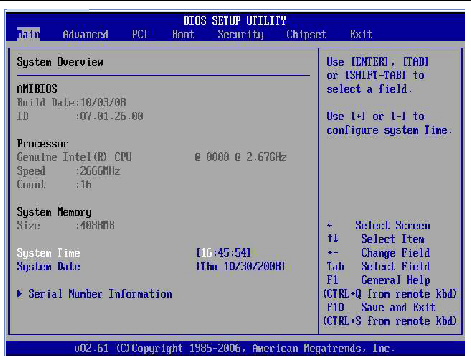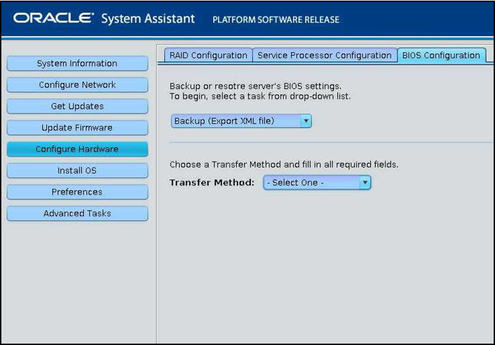

- SAVE BIOS SETTINGS HOW TO
- SAVE BIOS SETTINGS PROFESSIONAL
- SAVE BIOS SETTINGS SERIES
- SAVE BIOS SETTINGS FREE
MiniTool Power Data Recovery, the best free data recovery software, allows you to recover deleted files and lost data from computer local hard drive, external hard drive, USB ( pen drive data recovery), SD card, etc.
SAVE BIOS SETTINGS PROFESSIONAL
Here we also offer a free, easy and professional way to help you recover lost data or wrongly deleted files from your Windows 10/8/7 computer.
SAVE BIOS SETTINGS HOW TO
How to Recover Lost Data from Windows 10 PC For the detailed guide, you can visit: How to Reset Your BIOS – wikiHow. Tip: There are two other ways to reset BIOS/CMOS in Windows 10: one is resetting the motherboard’s jumper, another is to remove and reinsert the CMOS batter. If you need to change BIOS settings again in future, you can follow the same instructions to access BIOS again to change it. You may find it in one of the BIOS tabs.Īfter you find the Load Setup Defaults option, you can select it and press Enter button to start resetting BIOS to factory default settings in Windows 10.Īt last, you can press F10 to save and exit BIOS. Use the arrow keys on computer keyboard to find the BIOS setup default option in BIOS settings screen. It generally calls like: Load Default, Load Setup Defaults, Load Default Settings, Load BIOS Defaults, Load Optimal Defaults, etc. The name and location of “Setup Defaults” option may be different from various computers. The hotkey is varied from different computer manufacturers, and it could be F12, Del, Esc, F8, F2, etc. Then click Troubleshoot -> Advanced Options -> UEFI Firmware Settings, and click Restart to enter into BIOS settings screen.Īlternatively, you can also restart your computer normally and press the required key in startup screen to boot into BIOS settings window. You can click Start -> Power, press and hold Shift key, and click Restart button to reboot Windows into Windows Recovery Environment. Windows 10 users can access advanced startup options Windows 10 and get into BIOS menu. To reset BIOS to default settings, you need to access BIOS menu and find the Default Settings option first. This tutorial mainly introduces how to reset BIOS in Windows 10 to default factory settings. You can reset BIOS to fix a boot error of your computer, or boot your computer from USB flash drive to further troubleshoot Windows PC problems with Startup Repair, Reset this PC, System Restore, Command Prompt and other Windows built-in troubleshooting utilities. If your laptop won’t turn on, you can create a Windows 10 repair/recovery disk or USB drive to boot your computer and access the BIOS settings window. Newer computers uses UEFI to replace BIOS. Generally you can enter BIOS in Windows 10/8/7 to change the computer boot device and order. It exists in computer’s motherboard, and controls computer startup process. If you want to try to reset BIOS to factory settings for you laptop or PC to repair Windows 10 issues like a boot error or troubleshoot PC startup problems, you can check the 3 steps below to easily reset BIOS/CMOS Windows 10.īIOS is short for Basic Input Output System.
SAVE BIOS SETTINGS SERIES
If you're not sure the person who wants to try out your BIOS is on the same version, or you want to batch OC a series of system, use the second option.Guide on how to reset BIOS to default settings in Windows 10 computer. If you're on the same BIOS, you can use the first function. So, if you have your PC running at 4GHz set in the BIOS and then save it through Q-Flash, if you re-flash that saved BIOS it will automatically run 4GHz too. To save the entire bios, just open the Q-Flash, click save BIOS and it'll make a dump of the BIOS. Then, select Troubleshoot > Advanced options > UEFI Firmware Settings and press Restart to boot into system BIOS settings. This is very handy for people who want to OC multiple systems to exactly the same settings. If you want to enter your BIOS faster, just type shutdown /r /o /f /t 00 and click OK. Note: if you want to load the OC profile, you need to make sure you're on the same bios version as at was set up on.Ī feature I was completely unaware of and Hicookie just showed to me is the option to save the entire BIOS, including default settings and OC profiles, to your drive. Essentially, you are just saving the bios settings here and loading them back in as you do when normally using a BIOS profile.

All you need to do is go to the save profile section, select 'select drive in HDD/FDD/USB' and save/load the file you want. What everyone probably everyone already knows is you can save/load your OC profile to and from a USB drive. If you want someone to boot up with exactly the same settings you're using, the second BIOS save option should be much more interesting than the first one. Just a quick thread to show how you can save your GIGABYTE OC settings so you can share them with other users or use them for future reference.


 0 kommentar(er)
0 kommentar(er)
